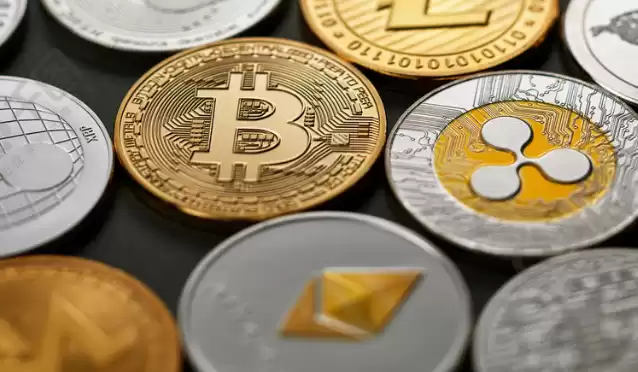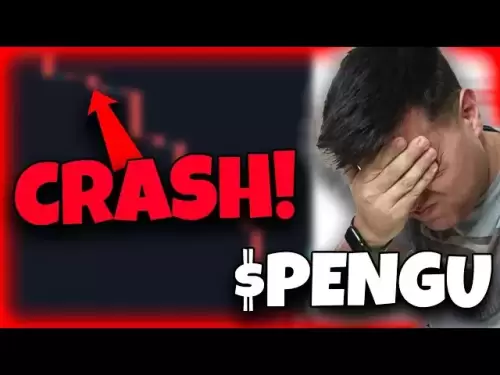-
 Bitcoin
Bitcoin $118400
0.47% -
 Ethereum
Ethereum $3836
2.20% -
 XRP
XRP $3.157
2.98% -
 Tether USDt
Tether USDt $0.9999
-0.03% -
 BNB
BNB $801.5
1.31% -
 Solana
Solana $180.9
2.07% -
 USDC
USDC $0.9999
-0.02% -
 Dogecoin
Dogecoin $0.2225
2.50% -
 TRON
TRON $0.3285
-1.02% -
 Cardano
Cardano $0.7789
2.60% -
 Hyperliquid
Hyperliquid $43.60
2.39% -
 Sui
Sui $3.892
4.41% -
 Stellar
Stellar $0.4229
3.34% -
 Chainlink
Chainlink $18.01
3.98% -
 Hedera
Hedera $0.2745
6.77% -
 Bitcoin Cash
Bitcoin Cash $582.3
3.38% -
 Avalanche
Avalanche $23.77
1.04% -
 Ethena USDe
Ethena USDe $1.001
0.01% -
 Toncoin
Toncoin $3.493
3.59% -
 Litecoin
Litecoin $110.0
2.48% -
 UNUS SED LEO
UNUS SED LEO $8.936
-0.37% -
 Shiba Inu
Shiba Inu $0.00001304
2.49% -
 Uniswap
Uniswap $9.999
1.09% -
 Polkadot
Polkadot $3.897
3.26% -
 Monero
Monero $308.6
-0.83% -
 Dai
Dai $0.9999
-0.01% -
 Bitget Token
Bitget Token $4.504
-0.04% -
 Pepe
Pepe $0.00001154
2.95% -
 Cronos
Cronos $0.1471
3.06% -
 Ethena
Ethena $0.6691
19.53%
How to play virtual currency contract
Remember that trading virtual currency contracts carries significant risks, including the potential to lose more money than you invested.
Oct 08, 2024 at 10:35 am

How to Play Virtual Currency Contracts
1. Understand the Basics
- What is a virtual currency contract? A virtual currency contract is an agreement between two parties to buy or sell a specific amount of a virtual currency at a predetermined price on a future date.
- What is leverage? Leverage allows you to trade with more money than you have in your account. For example, if you trade with 10x leverage and have $100 in your account, you can control a $1,000 position.
- What are the risks? Trading virtual currency contracts carries significant risks, including the potential to lose more money than you invested.
2. Choose a Platform
- Select a reputable platform that offers virtual currency contracts trading.
- Consider factors such as fees, liquidity, and customer support.
3. Fund Your Account
- Deposit funds into your trading account using supported methods (e.g., bank transfer, credit card).
4. Open a Position
- Decide whether you want to buy (long position) or sell (short position) a specific virtual currency.
- Determine the amount you want to trade and the leverage you want to use.
- Place your order on the platform.
5. Monitor the Position
- Once your position is open, track its performance in real-time.
- Use technical analysis tools and charts to identify potential trading opportunities.
6. Close the Position
- Decide when to close your position based on your trading strategy or market conditions.
- Place a closing order on the platform to realize your profit or loss.
7. Managing Risk
- Use stop-loss orders to limit potential losses.
- Manage your emotions and avoid overtrading.
- Consider using a risk management tool such as a hedging strategy.
Additional Tips
- Start with small trade sizes until you become familiar with the market.
- Educate yourself about virtual currency contracts and trading strategies.
- Practice on a demo account before trading real money.
- Be patient and don't expect to make a fortune overnight.
- Remember that trading virtual currency contracts is a high-risk activity and not suitable for all investors.
Disclaimer:info@kdj.com
The information provided is not trading advice. kdj.com does not assume any responsibility for any investments made based on the information provided in this article. Cryptocurrencies are highly volatile and it is highly recommended that you invest with caution after thorough research!
If you believe that the content used on this website infringes your copyright, please contact us immediately (info@kdj.com) and we will delete it promptly.
- Coinbase, Ethereum, and Science Token: A New Era for Crypto?
- 2025-08-01 06:50:12
- Byzantine Coin Pendant: Elite Evidence Shines New Light on Early Medieval Essex
- 2025-08-01 07:10:55
- From Homeless to Homeowner: A Ring, a Good Deed, and a Life Transformed
- 2025-08-01 06:50:12
- Bitcoin's Lazarus Wallets: Dormant Movement Awakens!
- 2025-08-01 06:32:41
- Meme Coins in 2025: Arctic Pablo Leads the Pack
- 2025-08-01 07:10:55
- Arctic Pablo Coin Presale Heats Up: Is It the Next Dogecoin or Shiba Inu?
- 2025-08-01 07:27:29
Related knowledge

Why is my Bitstamp futures position being liquidated?
Jul 23,2025 at 11:08am
Understanding Futures Liquidation on BitstampFutures trading on Bitstamp involves borrowing funds to open leveraged positions, which amplifies both po...

How to report Bitstamp futures for taxes?
Jul 30,2025 at 08:35am
Understanding Bitstamp Futures and Taxable EventsWhen trading Bitstamp futures, it’s essential to recognize that these financial instruments are treat...

Does Bitstamp offer inverse contracts?
Jul 23,2025 at 01:28pm
Understanding Inverse Contracts in Cryptocurrency TradingIn the realm of cryptocurrency derivatives, inverse contracts are a specific type of futures ...

What is the difference between futures and perpetuals on Bitstamp?
Jul 27,2025 at 05:08am
Understanding Futures Contracts on BitstampFutures contracts on Bitstamp are financial derivatives that allow traders to speculate on the future price...

How to find your Bitstamp futures trade history?
Jul 23,2025 at 08:07am
Understanding Bitstamp and Futures Trading AvailabilityAs of the current state of Bitstamp’s service offerings, it is critical to clarify that Bitstam...

Can I use a trailing stop on Bitstamp futures?
Jul 23,2025 at 01:42pm
Understanding Trailing Stops in Cryptocurrency TradingA trailing stop is a dynamic type of stop-loss order that adjusts automatically as the price of ...

Why is my Bitstamp futures position being liquidated?
Jul 23,2025 at 11:08am
Understanding Futures Liquidation on BitstampFutures trading on Bitstamp involves borrowing funds to open leveraged positions, which amplifies both po...

How to report Bitstamp futures for taxes?
Jul 30,2025 at 08:35am
Understanding Bitstamp Futures and Taxable EventsWhen trading Bitstamp futures, it’s essential to recognize that these financial instruments are treat...

Does Bitstamp offer inverse contracts?
Jul 23,2025 at 01:28pm
Understanding Inverse Contracts in Cryptocurrency TradingIn the realm of cryptocurrency derivatives, inverse contracts are a specific type of futures ...

What is the difference between futures and perpetuals on Bitstamp?
Jul 27,2025 at 05:08am
Understanding Futures Contracts on BitstampFutures contracts on Bitstamp are financial derivatives that allow traders to speculate on the future price...

How to find your Bitstamp futures trade history?
Jul 23,2025 at 08:07am
Understanding Bitstamp and Futures Trading AvailabilityAs of the current state of Bitstamp’s service offerings, it is critical to clarify that Bitstam...

Can I use a trailing stop on Bitstamp futures?
Jul 23,2025 at 01:42pm
Understanding Trailing Stops in Cryptocurrency TradingA trailing stop is a dynamic type of stop-loss order that adjusts automatically as the price of ...
See all articles

























































































